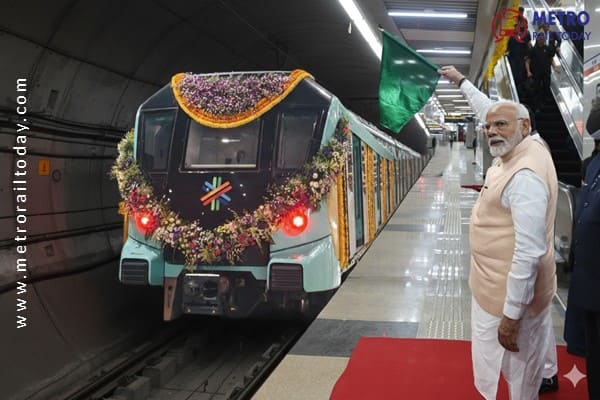 India's Rail & Metro Year-End Review 2025: A Year of Accelerated Execution and Visible Outcomes
India's Rail & Metro Year-End Review 2025: A Year of Accelerated Execution and Visible Outcomes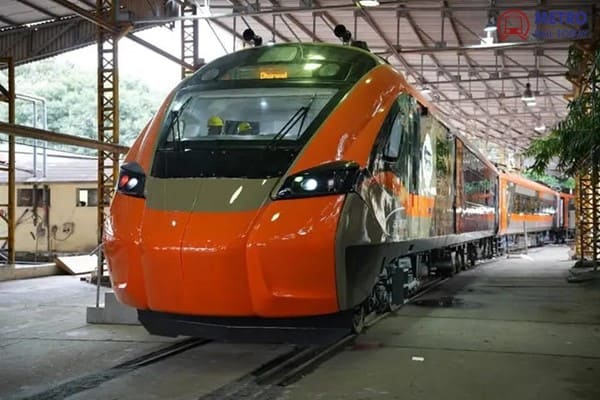 Indian Railways plans to manufacture eight additional sleeper rakes by March 2026
Indian Railways plans to manufacture eight additional sleeper rakes by March 2026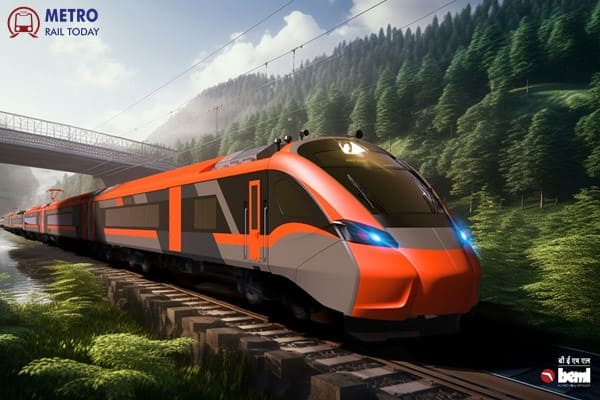 BEML sets timeline for production of high speed trainsets for India's first Bullet Train project
BEML sets timeline for production of high speed trainsets for India's first Bullet Train project Dr. Vinod Shah appointed First Director General of the Chamber of Railway Industries
Dr. Vinod Shah appointed First Director General of the Chamber of Railway Industries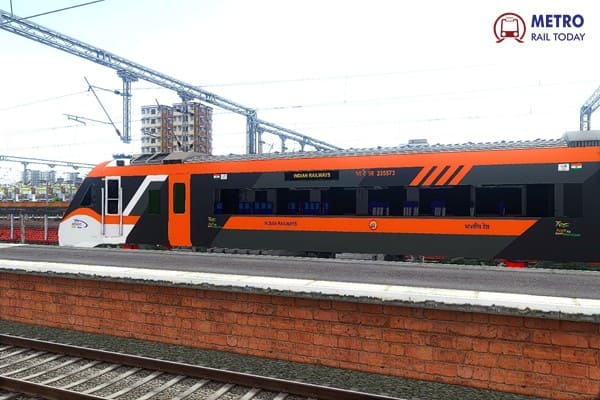 Indian Railways to run Namo Bharat Rapid Rail connecting Indore and Ujjain ahead of Simhastha 2028
Indian Railways to run Namo Bharat Rapid Rail connecting Indore and Ujjain ahead of Simhastha 2028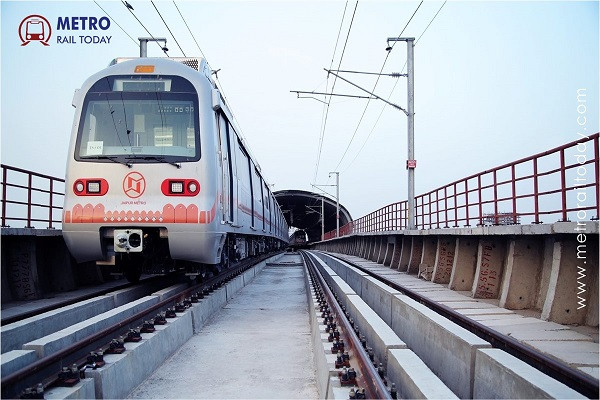 Jaipur Metro Phase 2 to link Airport Terminals, Promise faster Travel and stronger City connectivity
Jaipur Metro Phase 2 to link Airport Terminals, Promise faster Travel and stronger City connectivity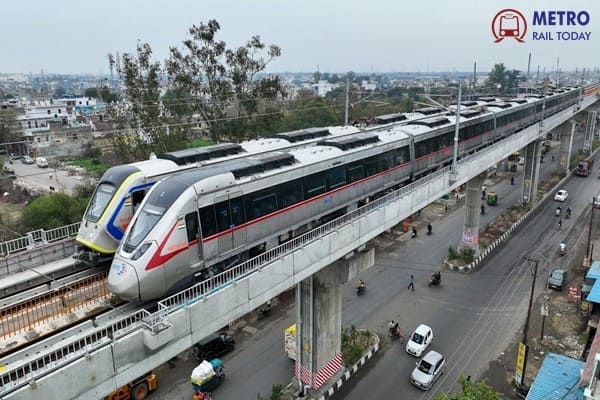 HMRTC proposes shared RRTS and Metro operations on Gurugram–Faridabad Metro corridor
HMRTC proposes shared RRTS and Metro operations on Gurugram–Faridabad Metro corridor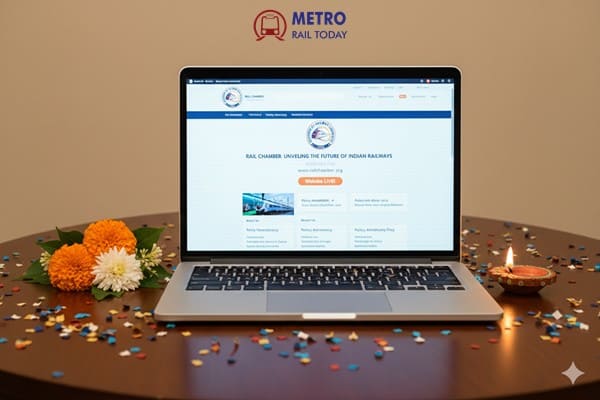 India launches Chamber of Railway Industries (Rail Chamber) on Good Governance Day
India launches Chamber of Railway Industries (Rail Chamber) on Good Governance Day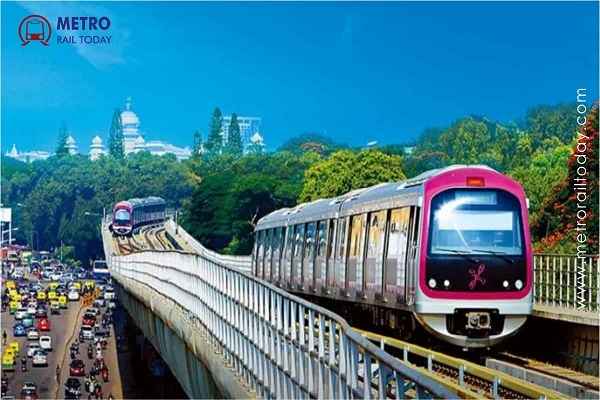 Bangalore Metro network gears up to grow from its current 96 km to 466 km by 2035
Bangalore Metro network gears up to grow from its current 96 km to 466 km by 2035 South Korea unveils EMU-370, Set to come World’s Second Fastest High-Speed Train
South Korea unveils EMU-370, Set to come World’s Second Fastest High-Speed Train
In-depth Analysis: Future of Metro Railways in India
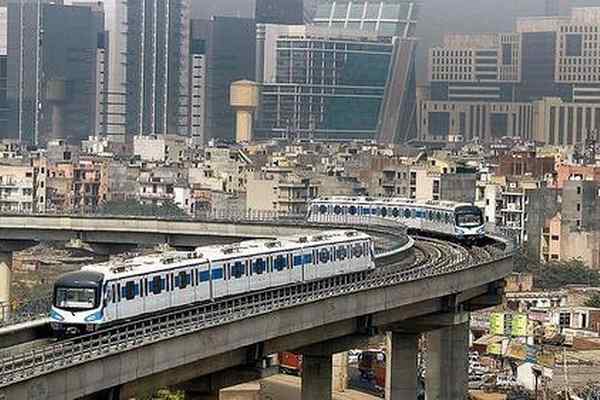
India’s development and operations of existing metro rail systems provide valuable insights towards improving upcoming systems’ planning and investments. The Government of India (GoI) continued financial support over the past two decades, and the Metro Rail Policy formulated in 2017, led to the development of a wide range of rail-based mass transport systems across the country.
Today, India has metro rail, suburban rail and monorail. Amongst these, metro rail systems witnessed the fastest growth, from a network length of 222km in three cities in 2011 to 751.9-km in 15 cities by 2022. An approved additional metro rail network of 1,032km will expand the reach of metro systems up to 26 cities. In addition, lighter urban rail systems such as Metrolite and Metro Neo are being conceptualised and developed by many small- and medium-sized cities.
The approved metro rail projects have a projected expenditure of INR 3 trillion ($40.4bn, €31.2bn) over the next five years, including equity investments by central and state governments and financing from other developmental and commercial financing entities.
A BACKGROUND ON METRO RAIL
Metros are amongst the most critical, complex and valuable infrastructures for cities to perform successfully in the global competition to attract people, talent and business. With their large trains and short headways, metros offer more than 60,000 passengers per hour per direction (pphpd) and are ideally suited for the most heavily used transport corridors. Metros are the pulsing arteries of bustling cities.
They deliver high economic, social and environmental value through a set of unrivalled positive externalities. The benefits are incommensurable and recurrent not over years or decades, but over generations.
METRO RAIL ARE:
A stress-saver: Legible and easy to understand routes, high frequency, high reliability and travel time predictability offer passengers quality time to themselves.
A life-style marker: Metros provide a real alternative to unsustainable modes. For a similar level of service, urban rail attracts up to 20% additional passengers in comparison to other modes. Metros contribute to high-quality place-making and stations are seen as an integral part of urban life.
A strong enabler of economic development: Good and reliable metro services support efficient economies. The 50 largest metropolitan areas by GDP in the world are all supported by urban rail systems – 76% have metros. Metros support the concentration of people and ideas that spark innovation and urban economies and reduce traffic congestion. In addition to the accessibility and connectivity benefits, socio-economic research in the past decade has identified a series of so-called wider economic benefits such as the agglomeration effect that provides additional justification for high investment requirements.
A space (re)creator: Space is a precious commodity in dense metropolitan areas. With very limited space requirements, metros are the most space-efficient transport system. In addition, dense and high-rise development (retail, office, housing) above and around metro stations allows for additional space, value and convenience in dense areas, thereby contributing significantly to the high quality of urban environment and life.
A confidence-building location factor and a land value booster: Metros are a permanent infrastructure that signals a strong commitment of decision-makers to sustainable mobility and spatial accessibility for customers, visitors and employees. They offer strong investment opportunities. Numerous studies also demonstrate that businesses and real estate within the vicinity of metros are universally seen as a premium location8.
A competitive edge to attract talents: Of the various measures available to employers to attract talents, convenient accessibility and fast commutes are key.
CHALLENGES
In addition to the many benefits, it must be recognised that implementing metro systems is complex and presents challenges: -
High capital intensity: Besides initial construction investment in greenfield projects, maintaining their value and functionality along the full lifecycle, by proactive asset management. A sound and robust economic and business model needs proper consideration to deploy its full benefits.
A long-term planning process: In built-up mature cities, it is not rare to see 10-20 years elapse between the emergence of the first idea to the opening of a line. This long time to market requires political stability and continued efforts to generate a high level of convergence and consensus among stakeholders.
Planning and implementation of Metro rail Projects
The state government is the sole authority responsible for the Urban Development as the matter comes under the state list. That’s why it becomes necessary for the State Governments to make their regions more advanced and developed without hurting the economic sentiments of the people. Urban transport is inseparable and intricately connected with the issues of Urban development. Therefore, it has been argued that a System approach should be followed while implementing Metro rail transport infrastructure.
System Approach
In this, a city is represented by Land Use Zones, which are superimposed with a matching transport network. While treating the Urban area as a system and the followed interaction among the traffic, transport, and land use help predict future requirements and then evaluate the other alternative modes for the most optimum mobility plan for the city. Metro Rails should be planned and executed, keeping in mind their longer future perspective. They are a high-capacity transport system, suitable for the growing cities having a future increase in population over several years.
Alternative Analysis
Urban transports, including metro rail, deliver public goods. Therefore, its appraisal must entail a social and economic cost-benefit analysis. Metro rail enhances mobility, which catalyzes economic development and improves a city’s livability. That’s why it is pretty essential to assess the economic and social viability of the proposed project. The internal economic rate of return for the approval of any metro rail project should be either 14% or above. Moreover, the State Governments must operationalize UMTA in the city within a year for all those metro rail projects taken with the help of Central Assistance. The State Governments are responsible for supporting the metro rail projects to ensure financial sustainability.
Moreover, Metro rails have become a status symbol for any state to prove its development. With the coming of the Metro, women can reach jobs situated at a greater distance as the Metro provides a safer and quicker mode of travel between the home and workplace. This mode of transport provides safety to women and other vulnerable sections of society, including the physically disabled and elders. There is also a coach reserved for the female commuters and seats for the PWD. The metros also motivate the passengers to use public transport more and more by creating residential, leisure, and commercial spaces in the metro stations. As a result, the commutation becomes much more accessible, and the project’s financial viability also improves.
Metro Rail Systems are essential in India to provide the last mile connectivity, which the feeder buses have failed to provide. The most considerable lacunae of the metro companies are that they are bothered mainly with the transportation of the passenger from one platform to another, but how they reach that platform has never been their concern. This problem got resolved by the Transit-Oriented Development (TOD), which introduced the idea of a Public-Private partnership. It also looked to develop the Metro in a very comprehensive manner and not in isolation. Still, some cities witness extreme ridership in buses because they don’t have any alternative public transportation system. Forex, the ridership in Indore Bus Rapid Transit System is around 6000 passengers per km.
Social Impact of the Metro Rail
All members of the society, irrespective of their caste, religion, financial status, can travel, which enhances the social integrity of the country. The necessity of a driving license is also eliminated to a great extent. It has come as a blessing in disguise for those who cannot drive or ride.
The economic impact of the Metro Rail Mass Rapid Transit Development improves the usefulness and efficiency of the Public Transit system, which results in increased business for commercial developments and helps improve the country’s economy. Public Transit systems offer considerable savings in materials, labour, and energy over other private transit systems. In addition, they have very efficient engines to carry large capacities, which helps in saving fuels.
Environmental impacts
Mass Rapid Transit Systems are more eco-friendly than other public transport. Private vehicles emit twice as much carbon monoxide and other greenhouse gases as Public Transport. With the coming of public transport, the number of cars on the road reduced, reducing the level of pollution in the city.
Advantages of Metro Rail over other modes of Public Transport System
- The Metro Rail System has proven to be the most efficient in terms of energy consumption, space occupancy and numbers transported.
- High-capacity carriers – very high volumes of peak hour peak direction trips.
- Eco-friendly – causes no air pollution, much less sound pollution.
- Low energy consumption – 20% per passenger-km in comparison to road-based systems.
- Greater traffic capacity – carries as much traffic as 7 lanes of bus traffic or 24 lanes of car traffic (either way).
- Very low ground space occupation – 2 meters width only for elevated rail.
- Faster – reduces journey time by 50% to 75%.
- Zero Emission - Unlike buses and other modes of public transportation, metro rails are eco-friendly, cause much less sound pollution, and have no air pollution.
- The number of road accidents has also reduced drastically after use of Metro Rail. Speeding usually happens when people are late for their work.
- Metro provides air-conditioned travelling with the best comfort at relatively cheap rates.
Challenges for Metro Rail in India
In India, metro rail defines the city’s development and growth, but still, there are specific challenges that the city and its residents need to overcome to ensure a holistic benefit. First, the skyline and the city’s urban form get distorted due to the widespread network of concrete viaducts. This can be addressed by taking the Metro to the underground. Secondly, the issue of land acquisition troubles the low and middle groups and disrupts their livelihoods. Finally, the construction phase disturbs the peace and tranquillity of the residents. Again, taking metros the underground is the solution to the problem as it will minimize the need for land acquisition and reduce the people’s inconvenience during construction.
Moreover, the financial viability of any metro rail project depends on the accuracy of the traffic demand forecasts and the ridership estimation. These projects also guide the socio-economic and environmental appraisal against the project’s cost estimation. Unfortunately, most of these forecasts often led to inaccurate or misleading pictures of the project.
Thirty-four metro rail projects are under implementation across the country, with a cumulative length of nearly 1230 km. In addition, the ministry has received proposals for another 16 projects with a cumulative length of 638km comprising Delhi, Haryana, Uttar Pradesh, Kerala, Maharashtra, Rajasthan, Tamil Nadu, etc. Expansion and development are the need of the hour, which no State Government can afford to neglect.
Metro rail projects enhance the values of the property and boost the economic activities, it consequently enhancing the government’s revenue at various levels. According to the Tax Increment Financing Model (TIFM), this growth in revenue should be utilized in the funding of the metro projects. With the help of the TIFM model, the collected funds can be used effectively for infrastructure projects without necessarily raising the tax rates. This would strengthen the local economy by providing additional revenues by way of development charges.
As per the report, prices of residential properties in south Delhi rose 15-20% in the past five to six years., while the micro-market of corridor-I and corridor-III in Hyderabad saw rates rise 15-20% from 2018 to the third quarter of 2021. Depending upon the location, land use, and micro market’s overall use, the value of properties is expected to go up 10-15% from current values with the launch of a metro corridor.
The deployment of the metro corridor directly impacts the real estate sector as it increases land value, land-use change and densification alongside the metro corridor.
Also, mass transit systems such as metros and monorails significantly contribute towards solving traffic problems. Thus, projects which are planned around the vicinity witness an increased urban real estate value, since consumers are willing to pay more for convenience.
The real estate market has seen a steady growth along the metro corridors, owing to an increase in developments alongside the routes. Furthermore, on average, the land value within 500 m of metro corridors has increased by 15-20%, especially in residential and commercial areas. Additionally, it has been observed that appreciation in land value has been on a rise after the metro operation and increased by 2-5% annually over other locations, compared to the construction and planning phase.
Conclusion
Metro Rail Transit Systems are now widely accepted as an alternative to mass transport in urban India because of its huge population, heightened vehicular traffic and increasing pollution. Metro in India will continue to become a dominant mode of transport in the future. Additionally, other modes of Urban Transport like rapid rail, light rail etc. are also gaining traction.
With the pace with which the population of India is increasing along with the government’s model of development, in such a scenario, it’s pretty impossible to neglect the Mass Rapid Transit System, especially the metro rail system. Without discrimination based on caste, religion, class, etc., the air-conditioned journey is best to promote integration in a heterogeneous and diverse country like India. The amazing fact is that it suits even the cheap pockets of middle- and lower-income groups. For a developing country like India, it’s not a luxury to have these types of public transport. Instead, it’s necessary to keep in mind the high population growth rate, increasing pollution, poverty, unemployment, etc. Although it comes under the State list, various channels are open to getting the Central Government’s assistance.
The public-private partnership model, grant by the Central Government and the Equity sharing model. They are essential for the growth of large cities and their residents. It’s also true that they are linked with different kinds of challenges, but still, all those challenges are easily surmountable with careful management and planning. Proper handling can be a boon for the city as it will strengthen its social and economic profile.
(This article is part of April 2022 Issue of Metro Rail Today)




